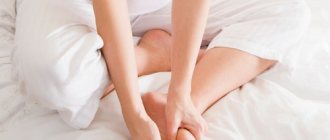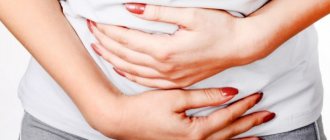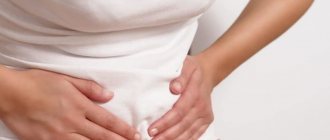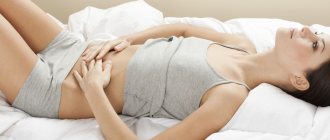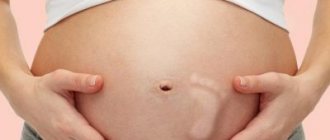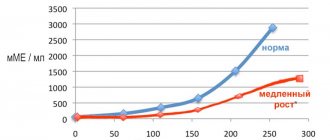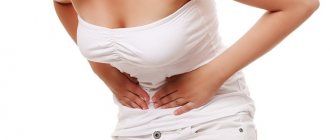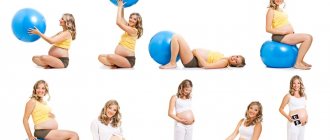Health of the expectant mother
Some people believe that a pregnant woman only experiences pain during childbirth. But women who are expecting a baby or have already given birth before know that painful sensations accompany almost the entire period of bearing a child.
With such a colossal restructuring in the body that occurs during pregnancy, almost any organ can remind itself of pain. But for most expectant mothers, it is their legs that most often hurt, and not only because of the constant increase in body weight.
Finding out the reasons
Leg pain can appear both in late and early pregnancy.
It is possible to say exactly why a symptom occurs only after diagnosis, but there are a number of circumstances that are quite understandable, due to the changes that occur in the body during pregnancy:
- Excess weight. Women who were overweight before pregnancy, as the fetus develops and grows, experience greater discomfort from adding additional kilograms than normosthenic expectant mothers. Already from the middle of the term, such women have aching legs during pregnancy, they swell in the evening and hurt.
- Shift in the center of gravity of the body in later stages. Redistribution of the load when walking causes discomfort in the lower extremities.
- Edema. After the 20th week, the load on the kidneys increases and if the drinking regime is incorrect, the pregnant woman may experience swelling. Physiological swelling, associated only with the consumption of large amounts of water, goes away on its own, in contrast to edema that occurs against the background of gestosis, a serious complication of pregnancy. With gestosis, arms and legs ache, and other alarming symptoms appear. Hospitalization and treatment in this case are necessary.
- Injuries. During pregnancy, old leg injuries, such as fractures or dislocations, can make themselves felt.
Legs hurt during pregnancy: what to do
If you have pain in your legs that is very bothersome, you should tell your doctor about it. It is necessary to describe the nature of the sensations (sharp pain, pulling, aching), indicate what exactly hurts: the calves of the legs, the muscles and bones between the legs, the feet. If, in addition, pain is felt in the back during pregnancy or in other parts of the body, it is also advisable to report this, this will help to accurately establish the diagnosis.
In the later stages of pregnancy, when a woman gains quite an impressive amount of weight, the doctor must examine the veins in her legs. If, in addition to pain, a dark mesh appears under the knees of a pregnant woman, this is a sign of varicose veins (read about the prevention of varicose veins on the website moe1.ru). It must be treated to avoid serious consequences for the cardiovascular system of the expectant mother herself and to prevent disruption of the blood supply to the fetus.
During each routine examination, the doctor also pays attention to swelling. Sometimes pain in the legs associated with the accumulation of fluid in the tissues indicates a very dangerous condition in pregnant women, called gestosis (read about this in our article on the website moe1.ru). To find out the causes of the disorder and make an accurate diagnosis, you need to undergo some tests (for example, a general urine test).
Interesting! What happens if you eat strawberries during pregnancy?
Pathological causes
If a pregnant woman’s legs ache not due to hormonal imbalance or a decrease in the amount of calcium in the body, then such manifestations require the attention of a specialist, as they can be a sign of various pathologies.
These include:
- Phlebeurysm. With this disease, a pathological change in the veins occurs, which is characterized by their saccular expansion, the formation of convolutions and tangles, and an increase in length, which leads to impaired blood flow and poor functioning of the valves. Due to poor circulation, it not only causes pain between the legs, but also disrupts oxygen transport, which is fraught with complications. Therefore, varicose veins need to be treated immediately.
- Thrombophlebitis. This is a blockage of veins due to decreased elasticity of blood vessels and disruptions in blood circulation. Accompanied by severe itching, acute throbbing pain in the legs below the knees.
- Myositis of the gastrocnemius muscle. Occurs when the lower extremities are overworked or hypothermia.
- Arthritis is inflammation of the joints. The disease is accompanied by swelling and redness of the skin around the joint.
- Chronic diseases. These include diabetes mellitus, which leads to swelling, itching and numbness of the lower extremities.
- Nervous disorder, depression. Restless legs pain syndrome arises and disappears spontaneously.
Leg pain during pregnancy
What to do if your legs hurt? Most often you can hear that you need to lie down. But the opinion that, on the contrary, you need to walk a lot is also not uncommon. Let's consider situations when it is really better to limit activity, and when you can continue to lead a normal lifestyle.
Varicose veins during pregnancy
Your legs may hurt if you have varicose veins - a change in the venous wall with subsequent disruption of the function of the vein and the development of venous stagnation. In this case, the legs hurt in the evening, become “heavy”, “hum”, and swell. Perhaps, apart from these complaints, no external manifestations of the disease bother you, but this does not mean that varicose veins do not exist - it is simply still at the stage when it is not visible and manifests itself only as a symptom of “heavy legs”.
In case of varicose veins, it is useful to lie down, but you should not lie down. Namely, several times a day you should lie down for 10-15 minutes, raising your legs slightly above the horizontal level - for example, putting a pillow under them. An active lifestyle is encouraged. Moderate physical activity in the form of walking and swimming is appropriate. The main thing is for the lower leg muscles to work, because they, like a pump, help the blood move upward through the veins. If you lie in bed all the time, the blood in the dilated veins will stagnate and thrombosis (blockage of a vein with clotted blood) may occur. But static load (standing on your feet or sitting in one position) should be limited. If you know you'll be on your feet all day or working at a desk, it's best to wear compression stockings or tights. This is a special knitwear for the treatment of varicose veins of the legs. Such stockings or tights create a certain pressure throughout the leg, preventing the veins from expanding and overflowing with blood.
Compression hosiery is sold in specialized stores. Ordinary tights with a “stretching effect” are not suitable for the treatment of varicose veins. Compression jersey will help overcome the load without harm; for the veins, and by the evening there will be no such pain and fatigue in the legs.
Flat feet during pregnancy
You may have never had flat feet, but it could develop during pregnancy and cause leg pain. With flat feet, the pain is usually in the foot and lower leg. Aching pain, periodic or constant - it depends on: the degree of flat feet. In the initial stages, the legs may simply become excessively tired after minor exertion.
What is flat feet and why can it occur during pregnancy? The bones of the foot are arranged in such a way that they form an arch. The arch of the foot is a kind of apparatus that absorbs shocks when walking, running, and jumping. Ligaments help hold the many bones of the foot in position so that it does not flatten under the influence of body weight. During pregnancy, all connective tissues undergo some “softening”. The ligaments become more elastic and pliable, and their function—holding the bones in the correct position—deteriorates. In addition, your normal weight increases by 8-10 kg, which also creates additional stress. When foot function is impaired, the load on almost all joints increases.
So what should we do, lie down? No. Of course, you can walk - only correctly. You probably don’t wear high-heeled shoes now anyway, but completely flat soles are also not the best choice. The most comfortable shoes are those with wide heels, 3-4 cm high. Place an insole-instep support (sold in specialized orthopedic stores or made to order) into it, supporting the arch of the foot, and walk as much as you want - of course, without overworking yourself. Before purchasing insoles, it is advisable to consult with an orthopedist to determine the degree of flat feet and select the best option.
Cramps during pregnancy
Cramps during pregnancy may occur due to low levels of electrolytes in the body. Electrolytes are minerals (calcium, magnesium, sodium, etc.) involved in the transmission of nerve impulses and muscle contraction. The lack of one of the microelements or the predominance of others leads to involuntary muscle contractions - cramps. Such sharp contractions cause pain.
Painful cramps can occur at rest and during physical activity. If your leg cramps during sports or while walking intensively, it is natural that after this you will want to lie down or at least be at rest. This is really advisable, because... with active movements, metabolism increases, and if heavy sweating also occurs, then the loss of microelements is inevitable. In this case, it is correct to reduce the load and replenish electrolytes. The fact that there may be a lack of calcium or magnesium at some period of pregnancy is natural, because the formation and development of the child’s skeletal system requires an increased amount of these and other minerals. Take special vitamins for pregnant women, they contain a balanced content of all essential minerals. Eat foods rich in calcium (fermented milk products, celery). Additionally, you should take calcium or other microelements in the form of tablets only as prescribed by a doctor, taking into account the duration of your pregnancy and the content of this microelement in your body. Uncontrolled use of such drugs can be harmful.
A blood test for calcium, potassium and sodium levels will help confirm the cause. At the moment of cramps, pull the toe of your foot towards you: this will relieve the pain a little. It is not necessary to lie down for pain caused by leg cramps.
Muscle pain during pregnancy
Of course, it’s hard to imagine that, while pregnant, you ran a cross-country race, squatted with a barbell, or did a high-impact workout on the steppe, and the next morning terrible muscle pain does not allow you to walk normally. Even if you haven’t done anything like that, but your legs hurt, it means that you have overstrained muscles that are not used to intense work. During the exercise, lactic acid was released - you will not confuse this pain with another. Lactic acid is formed during the breakdown of glucose. As a result, the working muscle receives “fast” energy, and lactic acid is used by the same tissues, but more slowly. If the amount of broken down glucose exceeds the amount consumed, then lactic acid begins to temporarily accumulate in muscle tissue and causes some “irritation”, which manifests itself as pain.
Such pain is not harmful, and for athletes it is even pleasant; many consider it an indicator of the effectiveness of training. In this case, there is no need to lie down, because lactic acid is produced when the muscle is working and is also consumed when the same muscle is working. Therefore, despite the pain, try to “work” a little with the muscles that hurt - this will help you use the accumulated lactic acid faster, and the discomfort will go away. This requires dosed physical activity on all muscle groups (physical exercise).
Radiating pain during pregnancy
Radiated pain means that the source of the pain is far from where it occurs. As a rule, the cause of radiating pain is the spine, and the legs may hurt. In this case, back pain is mild or absent altogether. During pregnancy, the spine experiences additional stress. The reasons are the same: an increase in body weight, a shift in the center of gravity, and softening of the ligamentous apparatus.
A common cause of radiating pain is sciatica, or inflammation of the sciatic nerve. The sciatic nerve runs from the spine to the lower extremities. Compression or inflammation of the upper sciatic nerve causes severe pain in the legs along the nerve. It seems that this pain, like a needle with a long thread, “pierces” the entire limb. Starting in the lower back, it reaches the toes. Depending on the location of the pressure on the nerve, the pain may travel along the outer or inner thigh and end in the big toe or little toe.
If your legs hurt like this, then it’s really better to lie down. In this case, a feather bed and a soft mattress are not suitable - the surface should be moderately hard, and it is better to lie on your back. This helps relax the paravertebral muscles and reduce stress on the spine. For pregnant women, starting from the second trimester, prolonged lying on your back is not recommended (in this position, large vessels running behind the uterus are compressed, which can lead to decreased pressure and dizziness), so you will have to look for other ways to relieve pain - lie in a position that is comfortable for you. For prevention (but not in the acute period), swimming can be recommended, which relieves stress on the spine. Go to the pool several times a week if your doctor doesn't mind. Wearing a brace can also reduce the strain on your back muscles. And of course, rest more while lying down, even if not on your back, but in a position that is comfortable for you.
Edema during pregnancy
Swelling often accompanies pregnancy, especially at the end of the second and third trimester. Excess fluid accumulates in almost all soft tissues of the body, but swelling will be most noticeable and noticeable in the legs and arms. You can notice the appearance of swelling in your feet by the cut-in elastic of your socks or tight-fitting shoes. Even with minor swelling, you may feel constant fatigue, heaviness in your legs and moderate bursting pain. To make sure your feet are swollen, apply pressure with your thumb on the front of your ankle. If after pressing there is a depression left, it means there is swelling, and it may be the cause of pain in the legs.
Edema, especially systematic swelling, which appears daily, is one of the manifestations of a pregnancy complication - gestosis, and requires mandatory consultation with a doctor, since with this complication, despite the fact that the condition of the expectant mother remains subjectively good, the delivery of oxygen and nutrients to the fetus deteriorates.
For pain caused by edema, it is not necessary to lie down, but it is better to reduce physical activity, in addition, the doctor will prescribe a number of measures and, possibly, medications to reduce edema - this is the restriction of fluid, salt, the use of diuretics, as well as drugs that improve blood circulation in vessels.
Now you see how varied the causes of pain in the legs are and how different the recommendations for movement patterns are in each individual case. Some are not worth worrying about, while others, on the contrary, may be a sign of a serious illness and require immediate medical attention.
Be sure to consult a doctor if:
too much pain, numbness, weakness in the sore leg;
- pain persists for more than three days;
- the appearance of the leg has changed (redness, cyanosis, pallor, swelling have appeared);
- the temperature of the diseased limb is lower or higher than that of the healthy one;
- ulcers or any formations appear on the diseased limb;
- pain is accompanied by a change in general well-being (fever, weakness);
- there are bone or joint deformities due to injury;
- the joint hurts and changes;
- pain is combined with swelling.
How to relieve the condition
Here are some simple preventative recommendations:
- Watch your weight. It is not recommended to overeat and drink too much liquid. Carbonated water should be excluded from the diet, and foods rich in microelements and vitamins should be included in the diet.
- During pregnancy, it is important to maintain good posture. Also wear comfortable shoes with low heels; avoid high heels. You shouldn't wear shoes without heels either, as this can lead to flat feet.
- Use special bandages and corsets for pregnant women.
- To prevent vein pain, it is recommended to take walks in the fresh air more often, but do not overload your legs with walking. Swimming will be useful.
- Don't stay in the sun for long periods of time.
- Do gymnastics for pregnant women. Exercise therapy will help get rid of pain.
- Sleep on your left side if you have high blood pressure, as this position helps reduce it. If possible, do not overexert yourself physically.
- To relieve swelling, it is useful to lie down with the foot end of the bed raised.
- For varicose veins, wear special corrective underwear. Its size is determined only by a doctor.
- Walk barefoot on clean sand or wet grass.
- Baths are not recommended. The best option during pregnancy is a contrast shower. It will strengthen the walls of blood vessels and reduce pain in the legs.
- If you have pain in your feet, then place your feet in a basin of cold water and lift them one at a time. You can also pour cold water over your calves and ankles. Then you should wipe your feet dry.
Adequate nutrition, adherence to preventive advice to prevent pain in the legs, timely therapy will help a woman easily endure pregnancy and give birth to a healthy child.
Author:
Matveeva Maria - Medical journalist. First category nurse in the department of traumatology and orthopedics
The nature of pain depending on the causes of its occurrence
Enduring pain and other discomfort in the legs is not the best solution for a pregnant woman. Establishing the cause of unpleasant sensations helps to carry out timely prevention and consult a doctor. Restrictions on the use of medications during pregnancy can be compensated for by physical therapy.
| Nature of pain | Related symptoms and conditions | Obstetric (pregnancy-related) causes | Pathologies |
| Aching or paroxysmal pain over the entire surface of the thigh, radiating to the perineum | Discomfort, stiffness and pain in the pelvic area | The effect of the hormone relaxin before childbirth | Damage to the hip joint, osteochondrosis, symphysitis |
| Drawing pain on the back of the legs | Pain syndrome spreads from top to bottom from the lumbar region | Pinching of the sciatic nerve by the growing uterus | Sciatica |
| Drawing, bursting pain on the inner thighs, back and inner surface of the knee | Swelling in the ankles, itching, burning, pain, mainly at night | Load on the veins of the lower extremities associated with an enlarged uterus and the intensity of blood circulation in the pelvic area | Phlebeurysm |
| Spasmodic, shooting, sharp pains mainly in the calf muscle | Feels in the initial phase or during deep sleep | Calcium or potassium deficiency | Urolithiasis, flat feet, umbilical or inguinal hernia, cystitis (if other characteristic symptoms are present) |
| Pain in heels, knees, ankles | Occurs after physical activity | Shift of the center of gravity, accumulation of salts, relaxation of ligaments due to hormonal changes | Flat feet, arthritis, rheumatism |
| Burning, twisting pain in the calf area | Symptoms are felt until 4 am and disappear by morning | Iron and vitamin deficiency, hormonal surges | Tired/restless legs syndrome, anemia, diabetes, thyroid problems |

